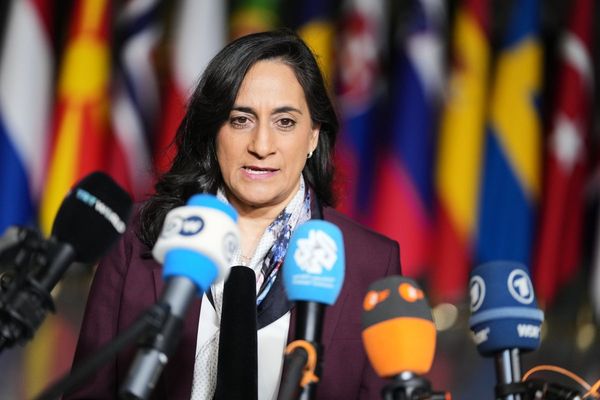In the evolving world of science and technology, few young researchers are capturing attention quite like Oreoluwa Alade, a Nigerian-born physicist and PhD candidate at North Dakota State University (NDSU). Through a unique combination of computational physics, high-performance computing, and artificial intelligence, Mr. Alade is building a body of work that is redefining how scientists approach materials design, imaging systems, and sustainable technology.
.jpg)
Mr. Alade’s journey began at the Federal University of Technology, Akure, Nigeria, where he graduated in the top ten percent of his class with a degree in Physics. He later joined North Dakota State University for graduate studies, earning a Graduate Certificate in Big Data Applied Statistics Analysis in 2024 and advancing his research toward a Master of Science in Physics, which he is on track to complete in 2025. His academic record speaks for itself: top marks, prestigious scholarships, and recognition for academic distinction. However, it is his research output, rather than just his academic record, that has distinguished him on the international stage.
By 2024, Mr. Alade was already presenting at the American Physical Society (APS) March Meeting in Minneapolis, where he showcased simulations of liquid-solid transitions in compressible microgels. These microgels—tiny, sponge-like particles—have applications ranging from biomedical implants to smart coatings. His Monte Carlo simulations and machine learning models provided novel insights into how these particles transition under pressure, findings that are vital for advancing soft matter physics. Earlier this year in August, he presented again at the International Soft Matter Conference in Raleigh, highlighting how particle compressibility shapes phase stability in complex systems.
What makes these achievements extraordinary is not just the technical rigor, but their real-world implications. Microgels can be used in designing self-healing materials, creating biocompatible implants that adapt inside the human body, or even building environmentally responsive coatings. By modeling these particles at a level of detail rarely attempted before, Mr. Alade is equipping scientists with the predictive tools needed to accelerate innovation in industries as diverse as healthcare, packaging, and nanotechnology.
In addition to his contributions in physics, Mr. Alade has demonstrated rare versatility by applying artificial intelligence to imaging systems. His research into fisheye camera correction tackles a problem most people have seen—distorted wide-angle images where objects near the edge look stretched or bent. By training deep learning models on vast image datasets, he built algorithms capable of correcting these distortions with far greater accuracy than traditional methods. The significance of this work extends far beyond photography: it strengthens the backbone of autonomous vehicle navigation, smart city surveillance, and robotics, all of which rely on cameras to “see” their environments correctly.
Mr. Alade’s achievements are further magnified by his ability to bridge academia and industry. His earlier experience as a process engineer and data analyst allowed him to understand how theoretical ideas translate into operational solutions. At NDSU, he has used high-performance computing clusters to simulate particle systems with millions of interacting components—an achievement that requires not just physics knowledge but advanced computing and statistical expertise. As he explains: “My work is about proving that physics and AI together can do more than predict—they can guide industries in building technologies that are reliable, efficient, and sustainable. This is how I am influencing my field of computational physics and materials science.”
Another measure of his extraordinary ability lies in his recognition and leadership. He has been awarded competitive travel grants to present at leading international conferences, secured scholarships such as the HillCity Foundation Merit Scholarship and NDSU’s Problem to Possibilities award, and actively mentors younger scientists. As President of the Community of Nigerian Students at NDSU, he has organized academic and cultural initiatives, while also serving as a reviewer for the Journal of Emerging Investigators, providing guidance to student-authors developing their first scientific publications.
Taken together, Oreoluwa Alade’s story illustrates a rare blend of scientific innovation, technical versatility, and leadership. His pioneering research in soft matter physics is expanding the boundaries of material science. His AI-driven work in imaging systems is transforming how we approach real-world technology challenges. And his leadership in academic and professional communities demonstrates his commitment to shaping not just his field, but the next generation of researchers. Currently, he is not just a promising young physicist—he is already an influential voice in the global dialogue on science and innovation.







